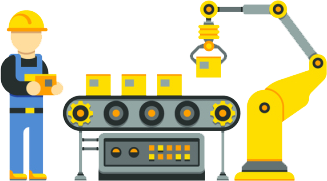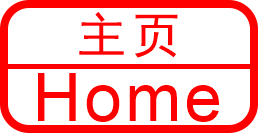Continuous Surface Painting and Drying Production Line
The "Continuous Surface Painting and Drying Production Line" is a highly automated, continuously operating industrial production equipment, mainly used for the surface painting and drying treatment of various workpieces (such as automotive parts, furniture, metal products, etc.). Here is a detailed description:

I. Equipment Composition
-
Conveyor System
-
Conveyor Method: Typically, a suspended conveyor chain or roller conveyor system is used. Workpieces move continuously along the conveyor chain or rollers. The conveyor speed can be adjusted according to process requirements to ensure the accuracy of the workpieces' dwell time during painting and drying.
-
Conveyor Track: The design of the conveyor track takes into account the size and weight of the workpieces, ensuring smooth and stable transportation. The track is usually made of high-strength steel, which has good wear resistance and stability.
-
Automatic Lifting Device: In some sections where multi-angle painting of workpieces is required, the conveyor system is equipped with an automatic lifting device. It can raise the workpieces to an appropriate height, facilitating the painting equipment to evenly coat all parts of the workpieces.
-
-
Painting System
-
Painting Booth: The painting booth is the core area of the painting process. The internal environment is strictly controlled to ensure painting quality. The booth is equipped with an efficient air filtration system that removes dust and impurities from the air, preventing them from mixing into the paint film and affecting its appearance and performance. The direction and speed of air flow inside the booth are also carefully designed to ensure smooth exhaust of paint mist and prevent its accumulation.
-
Painting Equipment: Automatic painting robots or electrostatic spray guns are commonly used. Automatic painting robots have high flexibility and precision, capable of performing all-round and even painting operations on workpieces according to pre-set programs. Their painting trajectories and paint volume can be precisely adjusted through a computer control system to adapt to workpieces of different shapes and sizes. Electrostatic spray guns, on the other hand, use the principle of electrostatics to charge paint mist particles, which then adhere to the workpiece surface, improving the paint mist adhesion efficiency, reducing paint waste, and achieving a more uniform paint film thickness.
-
Paint Recovery System: To improve paint utilization and reduce environmental pollution, the painting system is equipped with a paint recovery device. This device collects and separates paint mist generated during the painting process, allowing recyclable paint to be reused, reducing production costs and minimizing paint emissions.
-
-
Drying System
-
Drying Booth: The drying booth is where workpieces undergo drying treatment after painting. It is equipped with heating devices that dry the workpieces through hot air circulation. Heating methods can include electric heating, gas heating, or steam heating, depending on energy supply and production cost considerations. The temperature and humidity inside the drying booth can be precisely controlled through a control system to meet the drying process requirements of different types of paint and workpieces.
-
Hot Air Circulation System: The hot air circulation system is an important part of the drying booth. It evenly blows hot air onto the workpiece surface, accelerating the drying speed of the paint film. The design of the system takes into account the uniformity and efficiency of air flow. Through reasonable duct design and fan selection, hot air can evenly cover all parts of the workpiece, ensuring consistent drying results.
-
Temperature Control System: The drying booth's temperature control system uses advanced sensors and control algorithms to monitor the temperature changes inside the booth in real time. It automatically adjusts the power of the heating device according to pre-set process parameters, keeping the temperature within a set range. The temperature control accuracy can typically reach ±5°C to ensure the drying quality of the paint film.
-
II. Working Principle
-
Workpiece Conveyance: Workpieces enter the production line through the conveyor system. During conveyance, they move smoothly along the conveyor chain or rollers at a set speed and direction, passing through the painting and drying sections in sequence.
-
Painting Process: When workpieces enter the painting booth, the painting equipment (automatic painting robots or electrostatic spray guns) applies paint to the workpiece surface according to pre-set programs. During painting, the paint mist evenly adheres to the workpiece surface under the action of electrostatic fields or mechanical atomization, forming a uniform paint film. Meanwhile, the air filtration system and paint recovery system in the painting booth begin to operate, filtering impurities from the air and recovering paint mist to ensure a clean painting environment and efficient paint utilization.
-
Drying Process: After painting, the workpieces enter the drying booth, where the heating devices and hot air circulation system start working to heat and dry the workpieces. The hot air circulates inside the drying booth, transferring heat to the paint film on the workpiece surface and accelerating its drying speed. The temperature and humidity control systems in the drying booth automatically adjust according to process requirements, ensuring that the paint film cures under suitable temperature and humidity conditions to form a hard, smooth, and strongly adherent paint film.
-
Finished Product Output: After drying, the paint film on the workpieces is fully cured and meets quality standards. The workpieces are then conveyed out of the production line through the conveyor system and proceed to the subsequent packaging or assembly processes.
III. Process Features
-
Continuous Production: The entire production line uses continuous conveyance, with workpieces sequentially completing the painting and drying processes during conveyance. There is no need for frequent manual handling and loading/unloading of workpieces, which greatly improves production efficiency and reduces labor intensity.
-
High Degree of Automation: The painting and drying sections both use automated equipment, such as automatic painting robots, electrostatic spray guns, and temperature control systems. They can automatically perform painting and drying operations according to pre-set programs, reducing the impact of human factors on product quality and improving the stability and consistency of product quality.
-
Good Environmental Performance: The painting booth is equipped with an efficient air filtration system and paint recovery device, which can effectively reduce paint mist pollution and improve paint utilization. The drying booth uses hot air circulation for heating and drying, which is more energy-efficient and environmentally friendly compared to traditional natural drying or open flame drying methods.
-
Strong Adaptability: The production line can be adjusted according to the shape, size, and paint type requirements of different workpieces by modifying parameters such as conveyor speed, painting programs, and drying temperature. It can flexibly adapt to the production needs of various products and has strong versatility and adaptability.
IV. Application Fields
The Continuous Surface Painting and Drying Production Line is widely used in various industries, including automotive manufacturing, furniture production, home appliance manufacturing, and metal product processing. In the automotive manufacturing sector, it is used for painting and drying of car bodies and parts. In furniture production, it is used for surface finishing of wooden and metal furniture. In the home appliance manufacturing industry, it is used for painting the exteriors of products such as refrigerators, washing machines, and air conditioners. In the metal product processing industry, it is used for surface protection and decorative coating of various metal parts.











